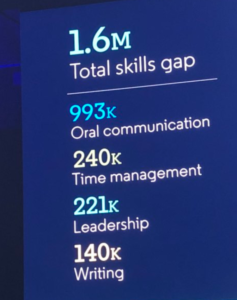You’ve probably heard all the business-psycho babble around “if you work doing something you love to do, you’ll never work another day in your life!” Of, if you work at something that makes you happy you’ll always love your work. Blah, blah, blah, it sounds like all you really need is a Life Coach!
I’m just kidding, a little.
I’m not a life coach kind of person. I mean I’ll take your $500 per session to tell you crap you already know, but blow hot air up your butt, so now you feel better about what you already know, but your $500 less rich. I’d so life coach you right now! You’d feel me all up in your mind. Let’s do this!
So, here’s what I think I’ve learned in the past twenty years about what it takes to have a happy, productive career:
- Do what you love, even if you can’t make money at it.
- Enjoy being poor.
So, now comes along the next brilliant idea around productivity and performance – Just Have Fun!
Yeah, turns out you’ll love your job if it’s fun to do! Shockingly, keen insight into this one, I know!
So, that’s your secret to being Ultra-productive! Just have fun. But not too much fun because then you’ll be ultra-nonproductive! Turns out there’s a fine line with fun. You want just enough fun to be productive, but not too much fun to be unproductive. See why it’s super easy to manage productive teams!?
I think where most people miss on the ‘fun at work’ play is that it’s not about being fun all the time. Nothing is fun all the time. I think it’s super fun to ride on a Jetski! One time I hit a wave on got thrown off that Jetski going 60 mph and skipped across the water and was pretty sure I was dead. That wasn’t super fun at all, but it’s still fun to ride on a Jetski!
It’s about having enough fun that you look forward to coming back and doing that work or that job again. That’s the line of fun every manager and every employee should strive for. Do you want to come back? Not do I “have” to come back? Do you really want to get up in the morning and go to work because you know there’s enough enjoyment in what you do that it makes sense to do that?
By the way, Fun at Work does not equal I Love my Job! I have had really crappy jobs that were super fun because of a number of reasons! I had to work midnights at a theater where we would just crack open beers once the last movie started. Super fun, awful hours. I once had a job running an ice cream cart at the zoo. I sat and watched Monkey’s all day, and ate ice cream. Crappy job, pretty fun.
Being productive and having fun at work makes sense. If you’re having fun, you’re energized, if you’re energized you’re probably more productive. The hard part is to figure out how to have ‘appropriate’ fun at work. I find ‘appropriate’ fun isn’t fun, so that’s always a problem!


